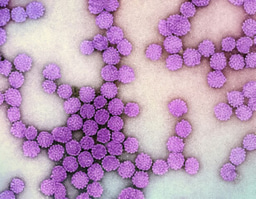What is the most popular mouse cell line in biomedical research? I don't have the official survey result, but I believe most people will accept B16 (F0) melanoma and its serial sublines, B16F1 to F10 and B16BL6, as the answer. I don't need to explain its importance and status in the history of cancer research to this community. Let me just give one example: Jim Allison, Nobel Prize Laureate in 2018, tested anti-CTLA-4 in mice implanted with B16 sublines in the late 1990s to validate his theory that blocking immune checkpoint could cure cancer.
B16 melanoma was identified in a mouse and maintained in vivo by serial transplantation in the Jackson Laboratory. However, it became a prevailing reagent for cancer research in the National Cancer Institute-Frederick, a autonomous campus of NCI dedicated to translational and multidisciplinary cancer research, including drug discovery, preclinical studies, structural biology, virology in cancers. It hosts one of the largest mouse study facilities in the US. Also, the majority of chemo drugs were actually identified or characterized in NCI-Frederick, including paclitaxel (Taxol).
In the late 1970s, Isaiah "Josh" Fidler, DVM, PhD, joined NCI-Frederick. He aimed to find how metastasis occurs: did tissues at distant sites select pre-existing metastatic cells, or cells migrate to the distant site and adapt to become metastases? If this sounds familiar to you, that's right- it's the cancer version of the classical Luria-Delbruck phage-resistant E. coli question. That's the genius of Dr. Fidler.
(Dr. Fidler gave the very first lecture in my Ph.D. study in M.D. Anderson Cancer Center. Years later, he told me: "If you think you get a good idea, go checking PubMed. Someone else has thought about it 50 years ago".)
He split the question into two: (1) does metastatic cells pre-exist in the primary tumor? (2) does the tissue at the distant site select the cells exhibiting the fitting phenotypes- this is the famous "seed and soil" hypothesis by the English surgeon Stephen Paget in 1889. However, no experimental proof was provided up to that point.
To answer the first question, Dr. Fidler thought to follow Luria-Delbruck experiment. He isolated 10 single-cell clones from the B16 cell lines and made them sublines, which later were well known as B16F1 to F10 cell lines. He then injected these sublines one by one to the mice through the tail veins. The cells would form metastases in the lung. Like Luria and Delbruck's idea, if the metastatic cells pre-existed in the parental line, these 10 sublines would show different efficiency in forming lung metastases. If metastases formed by adaptation to the environment, these 10 sublines would show similar metastatic efficiency. The answer was the former, like we expect from textbook knowledge now.
Dr. Fidler devised conceptually "simple" strategy to answer the second question. He injected B16 cells into the mice and recovered the metastatic cells from the different tissues. He then repeated the experiment by injecting the recovered cells into the mice, showing that they preferentially metastasized to the organs where they were recovered in the previous run. In fact, you can repeat this process and eventually obtain metastatic cell lines with super high organ specificity. This is the "in vivo cycling" method used by many metastasis researchers later.
Almost 100 years after Dr. Stephen Paget brought up the "seed and soil" hypothesis, Dr. Filder proved it experimentally in NCI-Frederick.
These results were published as two-page papers in Science. Simple, elegant, but solving one of the most important questions in cancer research. You won't see this kind of papers nowadays, as every high-profile paper has hot titles and 100 figures which no one has time to read through and get conceptual interpretation.
I actually did not understand Dr. Fidler's achievements when I studied for Ph.D. in the Graduate School of Biomedical Sciences (GSBS), UT-Houston/M.D. Anderson Cancer Center, where he joined in 1983 as the founding chair of the Department of Cancer Biology. In 2005, I got my degree and moved to Maryland to start postdoc research at NCI. In 2010, Dr. Fidler visited NIH at Bethesda to give a seminar talk. I asked to meet with him. Although he did not know me, one of hundreds of graduate students who had attended his Cancer Biology lecture at GSBS, he nicely agreed.
He told me many interesting things. For example, most of B16 metastases in visceral organs (lung, liver, etc) tended to lost pigmentation, however, they were highly pigmented in brain. Only many years later we began to get an idea why is that (https://lnkd.in/eti_8TXh). He also told me that, in an interview for a tenure-track position, the young candidate presented a study using a B16F subline (e.g. B16F10). She was asked a fun question: what "F" in B16F10 stands for? She replied "FVB", an albino mouse strain. It was very unfortunate not only because the answer was wrong, but also that it touched a big taboo: B16 series cell lines were derived from a C57BL/6 mouse, and messing up strain background is totally not allowed for all mouse modelers.
So I asked Dr. Fidler what F really stands for?
"Fidler." He smirked. To this day, I could not tell whether he was joking.
I never tried to find where Dr. Fidler's old lab was in the campus. That will be my top task next time when I visit NCI-Frederick at Fort Detrick.





Please sign in or register for FREE
If you are a registered user on Research Communities by Springer Nature, please sign in